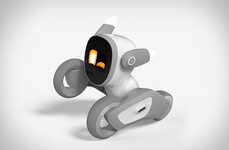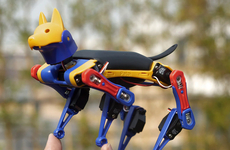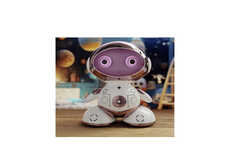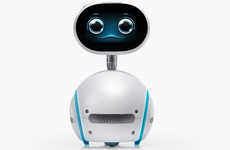
The Cozmo Was Designed To Feel Emotions Based on Its Environment
Mishal Omar — June 28, 2016 — Tech
References: anki & fastcodesign
This endearing miniature robot has a spontaneous personality and features smart technology.
Designed by Anki, the 'Cozmo' robot acts as a small robotic pet for the home. The miniature robot was designed to interact with children and adults alike and can respond to real-world occurrences with its actions as well as its emotions. While most toys with similar featrues have random emotions, Cozmo can sense its environment and respond accordingly. The robot was designed to become a pet for the user -- one that has a distinct and feisty personality that the user can grow attached to. Cozmo was designed to be spontaneous and unpredictable to further this effect and make it seem as though the robot is free-thinking and alive as opposed to programmed.
The designers of this miniature robot cleverly programmed it to play off and manipulate human empathy, making it an innovative gadget that will likely be popular among tech buffs.
Designed by Anki, the 'Cozmo' robot acts as a small robotic pet for the home. The miniature robot was designed to interact with children and adults alike and can respond to real-world occurrences with its actions as well as its emotions. While most toys with similar featrues have random emotions, Cozmo can sense its environment and respond accordingly. The robot was designed to become a pet for the user -- one that has a distinct and feisty personality that the user can grow attached to. Cozmo was designed to be spontaneous and unpredictable to further this effect and make it seem as though the robot is free-thinking and alive as opposed to programmed.
The designers of this miniature robot cleverly programmed it to play off and manipulate human empathy, making it an innovative gadget that will likely be popular among tech buffs.
Trend Themes
1. Spontaneous Robotics - Develop spontaneous and unpredictable robotic technology infused with elements of artificial intelligence and machine learning to create realistic experiences and amplify user attachment.
2. Emotional Interaction - Design products that are capable of matching human moods and emotions through intelligent interfaces to stimulate user attachment and engagement.
3. Sentient Robotics - Create robots that can interact with users and sense their environment, allowing them to behave spontaneously and respond naturally, leading to more empathetic and realistic experiences.
Industry Implications
1. Toy Industry - The toy industry has an opportunity to develop more interactive and realistic pet-like robots that mimic human emotions and behaviors to create lifelike experiences and increase user engagement.
2. Robotics Industry - The robotics industry has an opportunity to innovate emotional intelligence in robots, so that they can perceive human moods and empathize with them to enhance their relationships with humans.
3. Gaming Industry - The gaming industry can leverage spontaneous and emotional robotic technology in gaming concepts with complex storylines to create a more immersive and realistic experience for users.
1.8
Score
Popularity
Activity
Freshness























